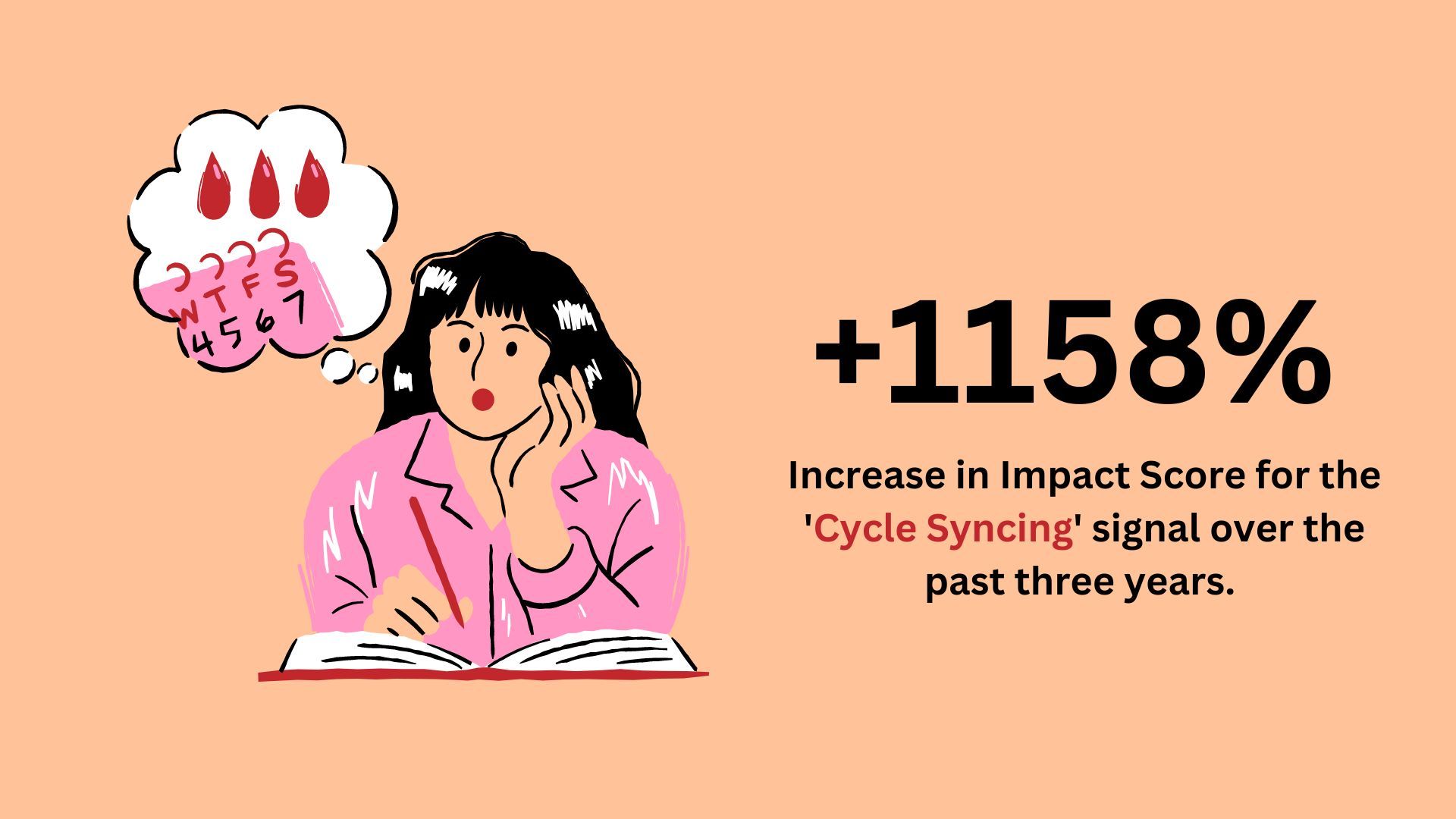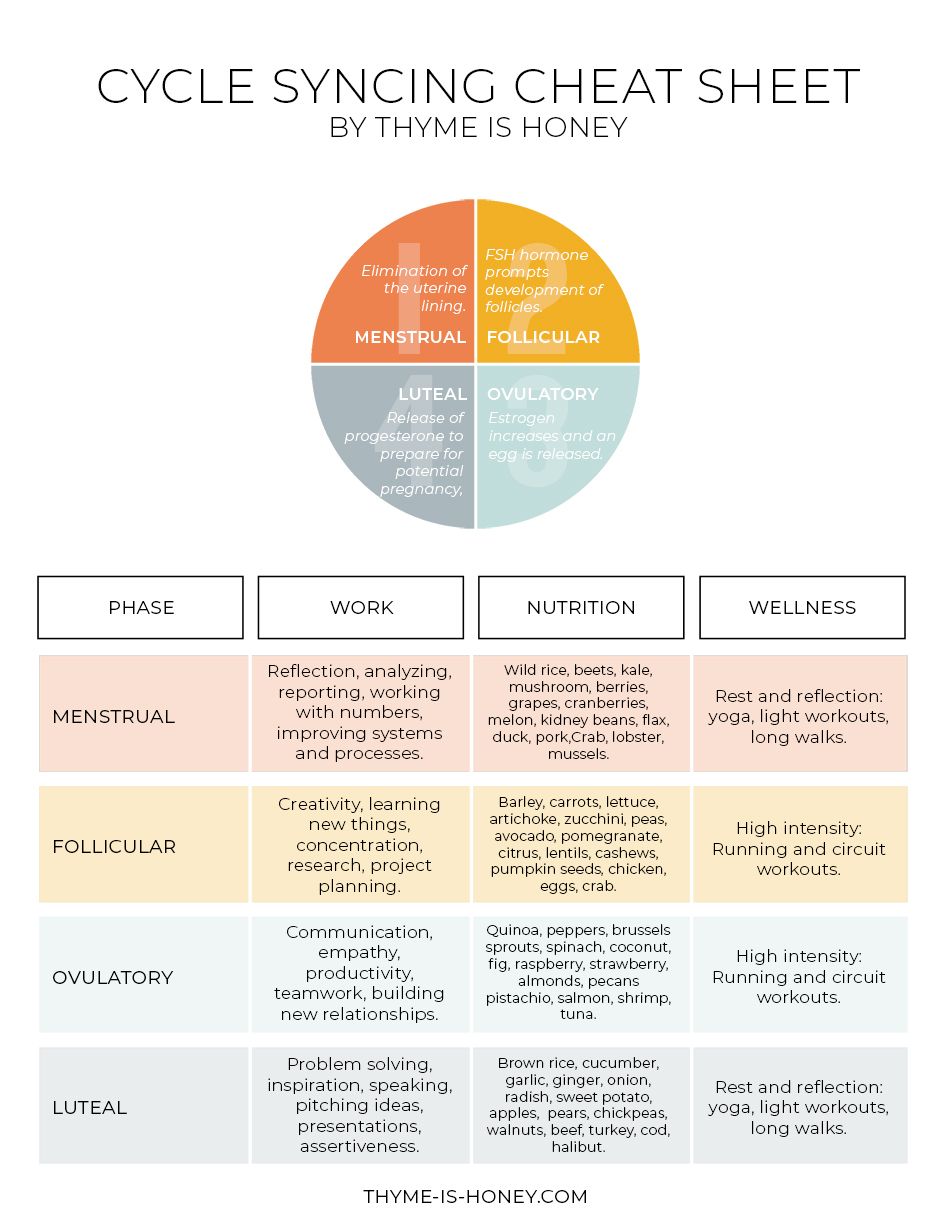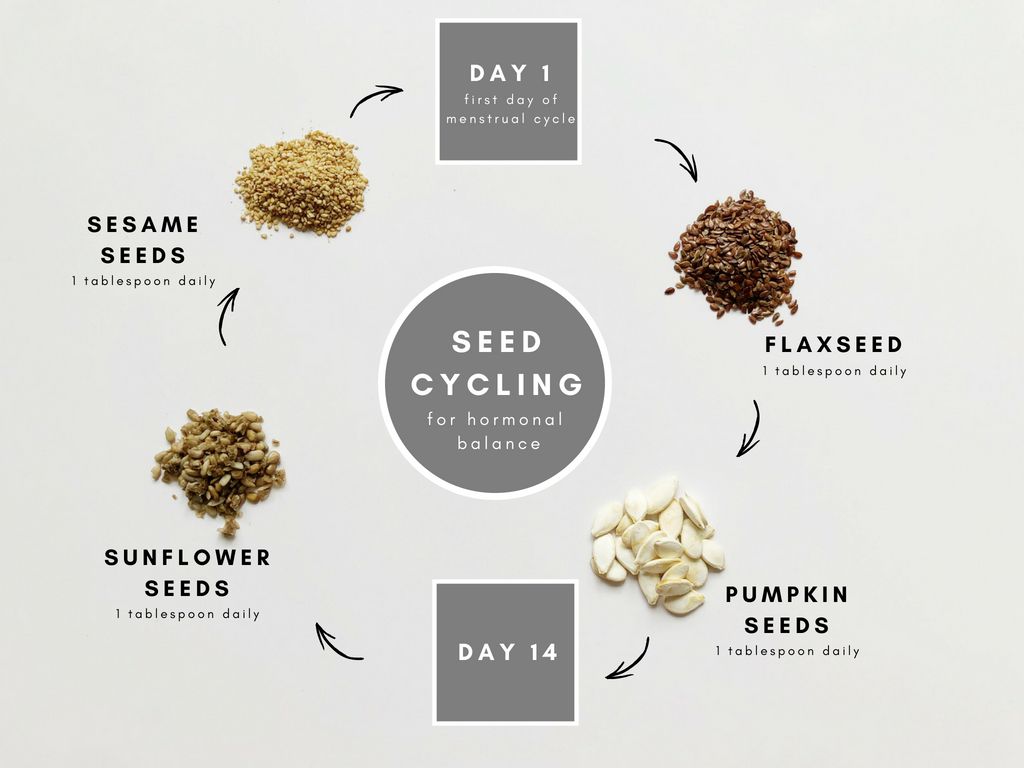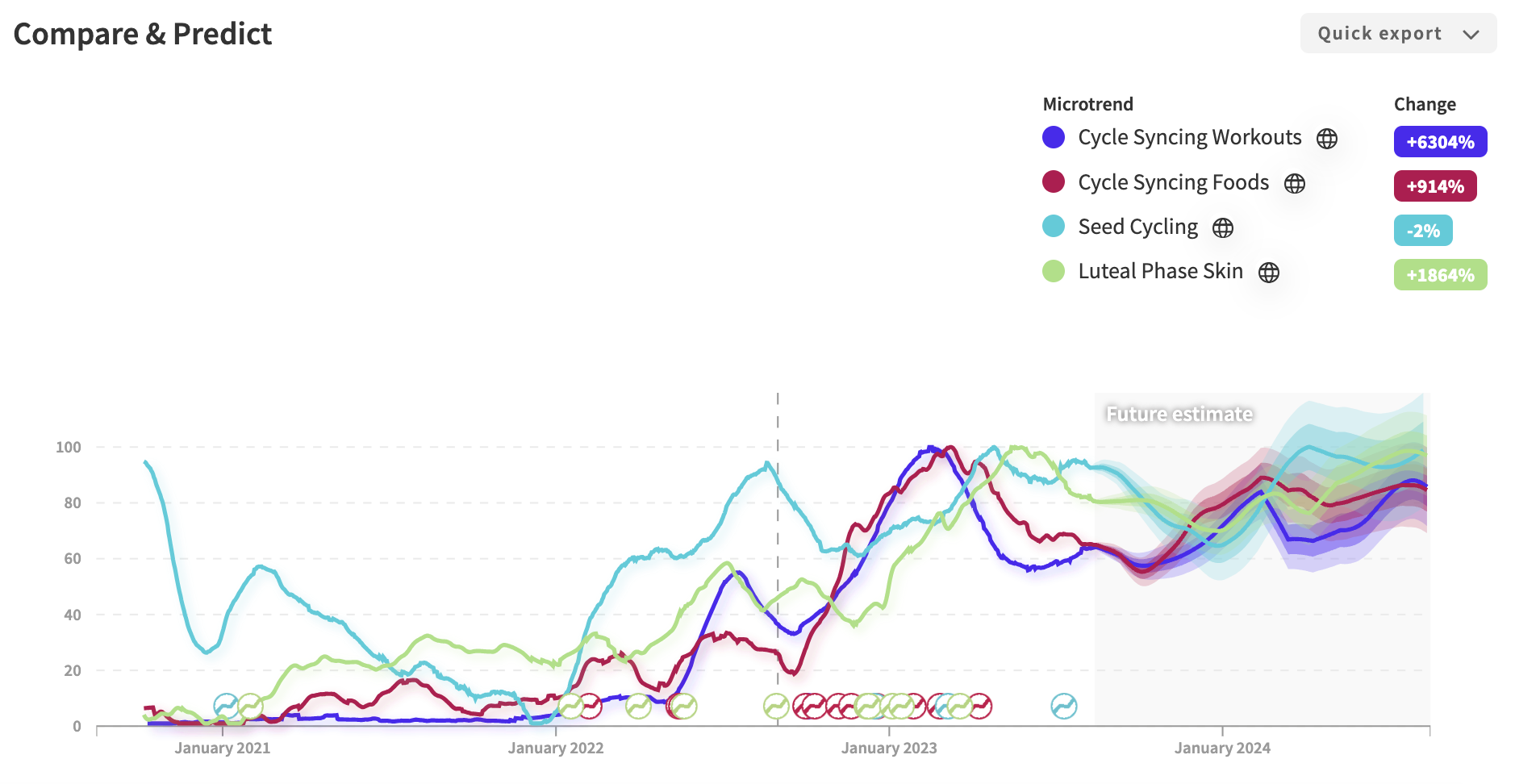Hello Forecasters,
Welcome back to the Inflection Point. The newsletter tracking 100 million consumer signals to predict cultural shifts relevant to you.
This week we’re covering ‘Cycle Syncing’
TLDR;
- ‘Cycle Syncing’ aligns lifestyle choices with a 28-day hormonal cycle.
- 300M women menstruate worldwide on any given day – 75% of them suffer from PMS symptoms and are looking to ‘fix’ their problems.
- Brands that understand these distinct phases and offer products to address them will increase brand loyalty and extend customer lifetime value.

Mother Nature's dirty trick
Even if your mind has no desire to bring a little you into the world, your body does – especially if you’re a menstruating human.
Each month a women’s body goes through four distinct hormonal phases:
- Menstrual
- Follicular
- Ovulatory
- Luteal
Each phase influences mood, energy levels, libido, and even physical appearance.
This 2 minute explains it all
Did you know that women’s faces are more symmetrical during ovulation?
Basically, women look and feel better during ovulation to increase the body’s chances of getting pregnant.
It goes something like this: pump women full of hormones to get them in the mood. Release pheromones to attract mates and…well, you know the rest; it's how you got here!
‘Cycle Syncing’ focuses on understanding each phase’s hormonal activity to optimize personal well-being
If someone says they’re ‘cycle syncing,’ they’re referring to aligning their diet, physical activity, and product use with distinct phases of their hormonal cycle.
This is one example of how women may optimize their personal cycle.

While this practice is exceptionally personal, the structure of the phases and expected hormonal shifts are similar.
For example, during the Luteal phase, drinking less coffee is advised. That’s because coffee inhibits a hormone that can constrict arteries and impede blood flow – potentially contributing to bloating and worsening cramps.
Or during the Menstrual phase, it’s recommended to eat beets and seeds to replenish the iron that’s lost during bleeding. In fact, there's an entire micro-trend dedicated to Seed Cycling.

#CycleSyncing currently has over 125M views on TikTok
Videos include calendar planning, specific exercises, product recommendations, and recipes.
So why should brands pay attention?
One aspect to consider is that this trend is being driven by user-generated content. The other is the sheer volume of the global market and the high potential for recurring sales.
It’s estimated that 63M people are experiencing cycle-related cramps, mood swings, breakouts, and fatigue right now
That’s a huge percentage of the global population experiencing discomfort and looking for solutions.
40% of exercising women report that their periods regularly hurt their training performance. Work can be affected too. Earlier this year, Spain became the first European country to offer women experiencing painful periods up to 5 days off each month.
Worldwide, menstrual leave is provided in Japan, Taiwan, Indonesia, South Korea, and Zambia.
Cycle Syncing is part of the macro trend of ‘Mindful Menstruation,’ which has seen a +3801% increase in growth rate over the past three years

For many, menstruation is a curse
When God cast Adam and Eve out of paradise, he punished Eve with the pain of childbirth. Religion aside, menstruation can be a dreadful experience requiring various products and practices:
- Heating Pads
- Skincare Products
- Headache Medication
- Fertility Tracking Apps
- Magnesium Bath Salts
- Hormone Supplements
- Special Fitness Routines
- Anti-Cramp & Bloating Pills
- Electric Anti-Cramp Technology
- Special Dietary Considerations
- Pads, Tampons, Period Underwear, Menstrual Cups
And that’s not even the emotional stuff.
Fem Tech is estimated to reach 50B by 2025
Because Fem Tech is everywhere these days, it’s easy to forget that when Apple Health debuted in 2014, senior VP of software engineering Craig Federighi told users, “You can monitor all your metrics that you’re most interested in.” This did not, for nearly a year, include period tracking.
Social media has helped more women learn about cycle care. Adapting practices and products to support their personal health.
“I see cycle care as part of a broader and long overdue shift in investment dollars to support brands and founders whose vision is to help women better understand their bodies,” said Rachel Harris, partner at Unilever Ventures.
“Bringing the previously taboo topic of the menstrual cycle into the open [educates] women about how this might impact [among many things] their skin, sleep, mood, sex drive, and energy.”

The NWO.ai signal comparison report forecasts continued consumer interest in cycle-syncing practices related to fitness, skin, and diet.
Brands that have integrated Cycle Syncing into their marketing?
- Hummingway: is offering the “Cycle Soother’ a patch for cramps.
- Flo Living: a personal evaluation, treatment, and optimization cycle app.
- Pvolve: a specialized 43-day fitness routine to harmonize hormones and physical activity.
- Rael: a suite of organic hygiene products, skin treatments, and heating pads.
Even Nike offers a special running plan.
The Key Takeaways:
While all menstruating women have experienced PMS symptoms at one time or another, only a small percentage have been educated on their hormonal cycle.
This gives brands a major opportunity to support women through personalized care and targeted product offerings.
Because of the physical component, cycle care is a powerful brand opportunity. Pain causes urgency and a willingness to try new products. Cycle Syncing has yet to hit the mainstream, which means brands can potentially be the first to educate their customers and establish long-term brand loyalty and frequent reoccurring sales.
Brands that can empower women by better understanding their bodies stand to gain from the Cycle Syncing trend.
That’s all we’ve got for now.
Thanks for spending time with us on this week’s Inflection Point. We’ll see you next time!
++ Have a topic you’d like us to explore? Let us know! We’d love to hear from you.